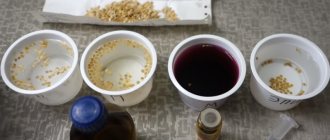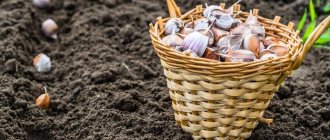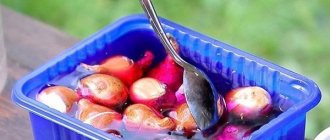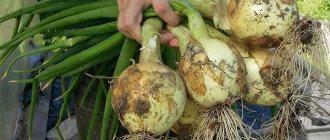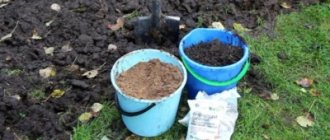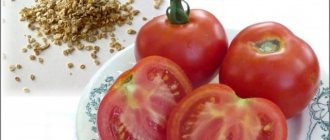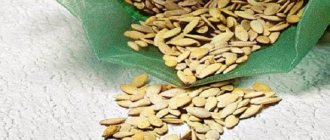For true gardeners, preparing tomato seeds for planting as seedlings is an important ritual that involves going through certain stages in a strict sequence. Preparatory measures are really important, since the availability of a crop directly depends on the germination of seeds, and germination can only be checked and increased by proper preparation.
Tomato seeds
Why is it important to prepare the seeds?
There are several reasons why you should pay close attention to carefully preparing your tomato seeds before starting to grow seedlings.
- Not all seeds are suitable for sowing, and without preliminary preparation it will not be possible to weed out unsuitable ones.
- On seeds that have been stored for a winter or several, especially if they are collected from their own plot, pathogens of fungal and other infectious diseases that pose a mortal danger to seedlings may remain.
- If you help a seed to germinate faster, awaken its vitality, the seedlings will be stronger and will be able to withstand even errors in care or climatic disasters.
- Everything works for the harvest - soil, temperature, presence of moisture and sun, fertilizing, absence of diseases, care, but the very first, important event for a successful start is preparatory work with seeds, which must be completed before the sowing season.
Seed preparation
Table. Step-by-step instructions for preparing tomato seeds.
| Stage | Description |
| Calibration | Seeds are sorted by size into small, medium and large. If there is enough seed material, only the last two categories can be sown. |
| Saline solution | Seeds are soaked in it to test their germination. |
| Heat treatment | An important stage that will protect plants from fungal and other diseases and sudden climate changes. |
| Disinfection | It is necessary to protect seedlings from destructive blackleg and late blight. |
| Bubbling | Reduces the inhibitory properties of essential oils present in seeds, which slow down their germination. |
| Hardening | The goal is to develop resistance to temperature changes, frosts, and drought in future seedlings from the moment of seedling formation. |
| Pelleting | Perhaps the most important stage of preparation, aimed at stimulating growth processes. |
When shoots appear with and without soaking
The time of appearance of the first seedlings depends on whether the seeds were pre-soaked. This period is counted from the moment the seeds are sown in a container with a substrate and covered with glass or plastic film.
On average, without pre-treatment, tomato seeds germinate in 7-10 days. When soaked, the seed material sprouts within 4-5 days from the moment of sowing.
First selection
Before you start preparing boxes with soil for sowing tomatoes for seedlings, you need to take the seeds through all the preparatory stages. This will take at least two weeks, so don’t rush to get the container and mix the fertile soil, first go for the seeds.
Advice. If tomato seeds are collected from their own varieties in your own garden, the task is simplified. They only need to be taken out of storage and the first stage of processing can begin. But if you purchase seed material, you need to approach its selection and purchase with maximum responsibility.
Buying tomato seeds
Selecting seeds - step-by-step instructions
The importance of choosing seed is difficult to overestimate; it is its initial quality that determines how high the harvest will be, and whether the tomatoes will be suitable for the purposes for which they were grown.
Popular varieties of tomatoes
Variety selection:
- Selection of varieties taking into account the growing zone according to its climatic indicators.
- Purchasing seeds with the expiration date indicated on the package and complete information about the manufacturer, characteristics of the variety and growing conditions.
- The purpose of the variety is that the plants are suitable for cultivation in open ground or in a greenhouse. Determination and indeterminacy.
- Ripening dates – early, mid-ripening, late. Keeping quality, transportation capabilities and method of use may depend on this.
- Conditions for using fruits – for canning, fresh use, for juice production, universal, for long-term storage or processing.
Large selection of tomato varieties
By the way. After following all the steps and selection criteria, when you have the treasured bags with the long-awaited seed in your hands, you can begin preparation, but first a primary selection is necessary.
Not all seeds are worthy of becoming direct participants in the sowing campaign. From purchased or homemade material, you need to select only seeds of symmetrical shape and calibrate them. You can learn more about growing tomato seedlings at home in our article.
Prices for tomato seeds of different varieties
tomato seeds
Useful tips
In order for soaking to help speed up the germination and development of seedlings, increase their immunity and ensure high yields, you need to remember a few useful recommendations.
- There are types of seed material that do not require pre-soaking . These include encrusted seeds, sold in gardening stores. They can be recognized by their bright pink, blue, green or emerald color. Such material has already been processed by the manufacturer and is completely ready for sowing.
- Tomato hybrids that are marked “F1” on their packaging do not need soaking . This agrotechnical technique does not affect their germination and productivity in any way.
- The exposure time of the solution must not be exceeded . This will lead to excessive accumulation of active components in the composition of the seed material, as a result of which its germination will deteriorate.
- Instead of tap water, it is advisable to use rain or melt water for soaking seeds . If you use tap liquid, it must be left for at least a day.
Soaking tomato seeds before sowing is an agrotechnical technique that helps speed up their germination and ensure the full development of seedlings. To do this, you can use both folk remedies and industrial or pharmaceutical preparations. With the help of simple processing, you can strengthen the immunity of seedlings, increasing their resistance to diseases and pests, and improve the yield and taste of fruits.
Calibration phase
Many gardeners make the same mistake year after year when selecting tomato seeds for planting to grow home seedlings - they take only the largest seeds, ignoring the rest. This is acceptable if there is an abundance of seed, but the large size of the seeds does not guarantee their quality at all. A small seed can have much more vitality than a large one. But a selection must be made. It's called calibration.
Calibrated tomato seeds
Advice. It is not necessary to sow only the largest seeds. The point of calibration is to ensure that there are seeds of the same size in one box. In this case, the shoots will be friendly, and the seedlings will develop harmoniously.
To calibrate, prepare three containers, remove the seeds from the bags and sort (calibrate) the small ones into one container, the medium ones into the second, and the large ones into the third. You can sow everything, but in three different seedling boxes.
Advice. At the same time, during a visual inspection, you should check the seeds for viability. All defective, discolored, deformed, darkened, or chipped specimens must be removed and discarded.
How many days should seeds be soaked?
For nightshade crops such as tomato, soaking cannot be calculated in days. If a seed spends more than 24 hours without oxygen, in a liquid medium, germination will be lost forever.
How to soak tomato seeds before planting so that germination is highest? No more than 10 hours.
Soaking seeds is a hydrothermal treatment. It is most needed by those crops whose seeds contain inhibitory substances (parsley, dill, celery, coriander). Tomato seeds do not have such substances, therefore, they do not need long-term leaching.
Salt test
There is no better way to check the germination of a dormant seed than to test it with a saline solution. This is done like this: calibrated seeds are immersed in a strong saline solution. The proportions are not critical, pour about 50 g of fine salt into a liter of water, which should be cold. Stir the salt well and wait until the solution becomes clear.
Soaking in saline solution
Then pour the seeds into the container with the solution and stir well with a “whirlpool” for a minute or two.
Wait until the liquid calms down and some seeds float to the surface, while the rest settle to the bottom.
Important! Only seeds that have settled to the bottom will be suitable for sowing. They are heavy, which means they contain a germ that will turn into a sprout. Light seeds are empty, nothing will grow from them.
The seeds from the bottom of the container need to be washed, dried and further processing continued.
Causes of death of tomato seeds
Tomato seeds in the photo
Tomato seeds remain viable for 7-9 years, but the best germination and largest yield are obtained from seeds from the previous year's harvest. The weight of 1000 healthy seeds prepared for planting should be 2.8-5 g.
Unfortunately, there are many reasons for the death of seeds, and some of them are very serious:
- Infection brought with seeds. Seeds received from amateurs must be disinfected. If the seeds have not been prepared by disinfection before planting, then pre-emergence damping off of the sprouts may occur.
- Infection introduced with seedling soil.
- Soil toxicity.
- Soil overloaded with salts.
- The soil is too dense.
- Deep sowing. If, moreover, germination occurs at low temperatures, when the pre-emergence period is extended, there is a danger of intrasoil rotting of the seedlings.
- Excessive moisture. Overmoistening of the soil in combination with low temperatures can lead to rotting of seeds even at normal sowing depth.
- Soil acidity.
- Sowing seeds that have been stored at low temperatures for a long time. When stored in cold conditions, seeds may enter a state of deep dormancy from which they are difficult to recover. Such seeds may sprout in 2-3 weeks or may not sprout at all.
If you buy seeds in a store, it makes sense to purchase seeds only from trusted and well-established companies. Before buying seeds, you should find out whether they are offering you a hybrid or a variety. There is a huge difference between these concepts. A hybrid is the result of crossing; it surpasses its parents in growth and productivity, and can sometimes exhibit unique properties. Hybrid seeds are most suitable for well-equipped beds or greenhouse conditions; on ordinary, tilled land they do not reveal their potential. On the label the hybrid is designated: F1, which means a hybrid from the first generation.
Pay attention to the shelf life of the seed. The older the seed, the greater the fruitfulness and growth of the plant. The best option for fruitful plants is three-year-old seeds.
Gardeners are better off getting their own seeds. They remain with the owner from the previous season. This creates, albeit small, its own seed fund. During preparation, such tomato seeds, like purchased ones, must undergo the necessary processing. You will learn how to prepare tomato seeds for seedlings on this page.
Heat treatment
Many people ignore this stage, and completely in vain. Only tomato seeds grown in the southern regions and hybrids (marked F1 on the package) can not be subjected to heat treatment. All other tomatoes for growing in the middle zone must undergo heat treatment using any of the existing methods.
By the way. First of all, the heat treatment procedure will protect future plants from fungal diseases, but will also increase the viability of sprouts and resistance to climatic changes.
Healthy tomato seedlings
- The first method is the longest. It needs to start long before planting, even in winter. It consists of hanging the seeds in a bag of fine-mesh gauze from a radiator or near a heating device for two months. The main condition is the temperature not lower than +22°C.
- More often, gardeners choose another method - processing under sunlight. In this case, you don’t even need to hang anything anywhere; the seeds are placed on a sheet of paper on a sunny windowsill, and remain there for a week. The material must be stirred periodically.
- Those who do not want to wait two months or even one week can use the express method. The seeds are poured onto a baking sheet, which is pre-lined with paper. They need to be heated in the oven at +60°C for three hours, making sure to stir every quarter of an hour.
After heat treatment
The main tasks of pre-sowing seed preparation: disinfection and stimulation
Preparing tomato seeds for sowing for seedlings may include the following steps:
- Sorting (calibration) – selection of viable seeds.
- Disinfection (disinfection) – soaking in fungicides and antiseptics.
- Stimulation - soaking in water or germination stimulants.
- Germination – preliminary germination of seeds in cotton pads, rags, filters for coffee or tea, etc.
That is, the point of all preparation is to select viable seeds, disinfect them and speed up germination. And get a guarantee that by the planned planting date you will have the required number of healthy tomato bushes. Without any surprises or re-sowing due to the fact that the seeds did not germinate or the seedlings died from blackleg!
Proper preparation of tomato seeds for planting allows you to:
- select viable, best seeds for sowing;
- speed up the waiting time for the first shoots by 1.5-2 times;
- disinfect seeds and prevent seedling diseases;
- strengthen the immunity of future plants.
Disinfection
It is absolutely impossible to skip this stage. You will have to carry out disinfection in one way or another, even if you do not want to subject the seeds to the salt test, select large/small ones and reduce the risk of seedlings becoming infected with fungus using heat.
Important! Tomato seedlings are fragile, small and very susceptible to various diseases at an early stage of development. Short-term soaking of seeds in one of the disinfecting solutions helps reduce the likelihood of damage to seedlings by 50%.
Disinfection in potassium permanganate
Method 1
The most common method of disinfection is soaking in potassium permanganate. The working solution is made from potassium permanganate powder, which is dissolved in boiled water slightly warmer than room temperature in the amount of 1 g per 1 liter of water. The solution should be quite rich in color.
The seeds are poured into a bag made of several layers of gauze and completely immersed in the solution for a third of an hour. Then the seeds are washed, poured into a flat plate and dried.
Drying tomato seeds
Method 2
The second most popular treatment method for diseases and pests is soaking in hydrogen peroxide. It is carried out strictly according to the recommended rules, otherwise you can easily “burn” the seeds, receiving instead of disinfected material unsuitable for sowing with zero germination.
A pharmaceutical solution of hydrogen peroxide with a concentration of 3% is heated to forty degrees. Then the seeds prepared and placed in the bag are immersed in it for no more than ten minutes. Immediately after this time has expired, the seeds, without washing, are poured onto a paper napkin and dried intensively.
Soaking seeds in hydrogen peroxide
Method 3
If available means for use in the first two methods are found in almost every home, then for the third it is necessary to buy the drug “Fitosporin M”. But treatment with phytosporin is guaranteed to protect plants in the future from the most formidable and destructive diseases - blackleg and late blight.
1.5 g of the drug is dissolved in a liter of water, preparing the solution two hours before use so that it can “infuse”. The seeds are immersed in it (in a bag) for two hours. Then, without washing off the solution, they dry.
Fitosporin M
Prices for Fitosporin M
phytosporin m
How to choose good tomato seeds
A lot depends on the quality of the seed, so this step needs to be given special attention. The following tips will help you choose quality tomato seeds:
- Try to buy goods in trusted stores; it is advisable to avoid shopping in markets and in unverified places.
- It is recommended to purchase a product from a reliable manufacturer that has been on the market for several years and enjoys a good reputation and has good reviews from real customers.
- The packaging must contain detailed information: variety, date of manufacture, expiration date, contact information, manufacturer’s recommendations on the timing of planting seedlings, planting in the ground, time of crop ripening.
- It is better to choose seeds of zoned varieties that are intended for cultivation specifically in your climate zone.
- Before purchasing, it is recommended to decide what kind of planting material you need - varietal, hybrid, determinate, super-determinate, interdeterminate tomatoes.
Advice! Pay attention to the production date; it is recommended to choose fresh seeds. Remember that their viability period is about 4 years, after this time they lose their germination capacity.
Bubbling
The procedure is not mandatory; moreover, it can only be carried out using a device that enriches the water with oxygen, such as the one used in an aquarium.
By the way. If you have an aquarium and a compressor, bubbling will help reduce the inhibitory effect of the essential oils in the seeds, which are responsible for the safety of the seed and slow down its germination.
The process occurs as follows: the seeds are immersed in a container with warm water (in this case, they should simply be poured into the water without placing them in a bag). A compressor hose is lowered to the bottom of the container and the oxygen supply is turned on. The procedure takes from 12 to 18 hours. Then the seeds are dried.
Bubbling
Picking tomato seedlings
Picking is planting seedlings from a common planting container into separate cups or pots. It is best to do this when young tomato plants have 3-4 true leaves. By this time, the seedlings will already be quite strong.
The day before picking, the plants are sprayed with Epin ; it has an anti-stress effect. For 3-4 hours, the seedlings need to be carefully watered (preferably with a solution of Fitosporin ), avoiding waterlogging.
It is better to pick in separate pots. This makes it easier for plants to take root, because when transplanting into the ground the soil lump is not disturbed.
The soil mixture for picking can be taken of the same composition as for sowing. Experienced gardeners recommend putting 2-3 granules of superphosphate fertilizer at the bottom of each glass; tomatoes are sensitive to the presence of phosphorus.
During picking, the plants are carefully removed from the ground one by one. At the same time, there is no need to hold the plant by the stem, so as not to break it. You need to move the plant by holding it either by the root system or by the cotyledon leaves (in both cases, very carefully).
Usually, when picking, the tip of the seedling root is shortened (pinched). But there are also opponents of pinching. In their opinion, without pinching , plants form a more developed root system and require less watering in the future.
When planting, plants are buried approximately to the cotyledon leaves.
After planting the plants, the soil should be slightly compacted, the seedlings should be carefully watered and placed in a cool, shaded place for 2-3 days. You cannot immediately place plants near the window after picking.
Picking tomato seedlings video
The video shows picking tomatoes step by step. Caring for tomato seedlings includes such an operation as picking seedlings. It involves transplanting seedlings from a smaller container to a larger one, while the seedlings are buried up to the cotyledon leaves. The picking process, the use of Epin, how to fertilize tomato seedlings in the picking field.
Hardening
Another stage, which is not mandatory, but increases the seedlings’ chances of resisting climatic conditions, especially when planting in open ground in early spring.
In an apartment, there is only one place where you can harden tomato seeds - the refrigerator. But first they must be wrapped in moistened gauze and left in the room for 48 hours. Then place the seeds in the refrigerator for eight hours. After this, put them in a warm place again and keep changing temperatures for two weeks or until the seeds hatch.
Before hardening, the seeds must be wrapped in moistened gauze.
Caring for tomato seedlings
For seedlings to emerge, tomato crops need a temperature of 22-25°C. When placing seedlings, you need to remember that even in an apartment with new windows, the temperature near the window is lower. Place a thermometer next to the sowing container, this will make it easier to control the temperature. At low temperatures in wet soil, the seeds may rot. And at high temperatures the embryo dies and the seeds also do not germinate.
When the first shoots appear, the seedlings are placed on the windowsill. The temperature is maintained at 12-15°C for 5-7 days. This is necessary to strengthen the root system of the seedlings.
When the young plants get a little stronger, the temperature is increased to 18-23°C during the day, and 14-16°C at night. If the temperature is significantly higher, in conditions of lack of light, the seedlings may become very elongated.
You can regulate the air temperature by ventilating, moving it to warmer, or vice versa, cooler rooms.
Additional illumination of tomato seedlings
For normal development, young tomato plants require at least 12 to 14 hours of daylight. Therefore, tomato seedlings need additional lighting, especially if they are sown very early.
You can read about how to add light to seedlings correctly in the article: How to add light to tomato seedlings .
You can place a foil screen behind the seedlings. This will also increase the light level.
Watering tomato seedlings
After sowing, the soil must be kept moist. Excess moisture can cause the seeds to die from rotting. It is better to spray the seedlings with a spray bottle rather than water them. Water for irrigation should be warm and settled.
When the seedlings appear, water the seedlings during the day; do not water them at night. In cold and wet soil there is a very high risk of developing blackleg.
Periodically, after watering, you need to loosen the soil a little - make several punctures with a sharp object to destroy the soil crust.
Feeding tomato seedlings
If you have good quality soil for tomato seedlings and the seedlings are developing normally, you don’t have to feed them before picking; they will have enough batteries. But immediately after picking, the plants are not fed; ten days must pass for the plants to take root.
In many recommendations, the first fertilizing is recommended to be done with calcium nitrate.
Nitrogen will give impetus to the growth of seedlings, calcium will reduce the acidity of the soil. Experienced gardeners believe that even ready-made soils need to add soil “deoxidizers.”
Next, every 10 days you can apply universal fertilizers with microelements; there is a large selection of them now.
In order not to burn the plants, you first need to moisten the earthen ball, and then apply fertilizing. In no case should you exceed the recommended standards. It is better to feed with a less concentrated fertilizer than to burn the seedlings.
When feeding, it is necessary to take into account the condition of the seedlings. If, for example, the seedlings are elongated, then they need to be fed with phosphorus and potassium fertilizers, and nitrogen fertilizers should be excluded.
During the entire period of growing seedlings, you can use growth regulators: Epin, Zircon, Energen, etc. These drugs accelerate the growth and development of seedlings at home. Read more about plant growth regulators in the article Preparations of plant growth regulator NEST M.
Pelleting
The embryo, which is in every full-fledged seed, needs nutrition in order to ensure full growth of future seedlings. There are several ways to “feed” it, or rather, to stimulate internal biological processes that will help it quickly hatch and produce strong, friendly shoots.
Important! Pelleting is carried out after all preparatory procedures, last. After this, sowing is carried out immediately, since seeds treated with activators are not stored.
Method 1
Feeding with biologically active substances, which are sold in gardening stores. One of these substances is the drug “Epin”, the second, no less popular, is “Zircon”. A solution is prepared from Epin as follows: three drops are diluted in 100 ml of water. Soaking the seeds lasts four hours, followed immediately by planting.
Epin-extra
“Zircon” for the solution is taken in the amount of 0.025 ml per 100 ml of water, and the seeds need to be immersed in it for three hours, and then sowed immediately.
Top dressing Zircon
By the way. The preparations can also be treated with succinic acid. It is diluted in the proportion of grams per liter, and the seeds need to be kept in the composition for 12 to 24 hours.
Prices for the drug Epin
Epin
Method 2
The second method is for those who do not want to use even fairly harmless, but industrial drugs, preferring folk remedies.
Seed treatment can be done using aloe juice. Bioactive juice must first be prepared. To do this, the lower stems of the plant are cut off and placed in parchment in the refrigerator for two weeks - this is exactly the time needed for the concentration of active substances to reach a maximum.
Treating seeds with aloe juice
Then the juice is squeezed out, diluted one to one with boiled water, and the seeds are soaked in it for six hours.
Ash is used successfully as a bioactivator, two tablespoons of which are infused for two days in a liter of boiled water. The seeds are soaked in it for a day.
Another popular method of panning is honey. A teaspoon per glass of water and soaking the seeds in it for six hours before sowing is enough.
Treatment with stimulants or nutrient loading
The procedure is carried out a day before disembarkation, not earlier. Stimulants can be purchased at a specialty store or prepared yourself. Maintain the temperature at least +20ºC.
It is recommended to use melt water.
Juice is squeezed out of potatoes or aloe and diluted a little with water. The seeds are placed in one of these nutrient solutions for one day.
Ash solution for enrichment with microelements: 1 tsp. Stir in a glass of hot water and leave for 24 hours. Then the seeds are kept in it for 4-5 hours.
Industrial preparations: Zircon, Epin (1 drop per 1 tbsp.) for 16-18 hours.
Treatment with stimulants is carried out only after disinfection!
After stimulation, the planting material is not washed, but only dried. This procedure promotes rapid and simultaneous germination of seedlings.
Awakening and germination
Two more “bonus” processing methods that were used back in the days when there were no bioactivators, disinfectants and aquarium compressors.
The awakening of seeds was carried out in every house with a garden plot using simple warm water. To do this, the seeds were immersed in water on gauze and kept for 12 hours (often a saucer or bowl with water was placed on a heating radiator). A prerequisite is to change the water every four hours.
Also, in order to gain confidence in 100% germination, many gardeners germinated tomato seeds before sowing, especially if they were home-harvested or stored for a long time.
They germinated on cotton wool, now they use cotton pads. Immerse them in warm water poured into a shallow bowl. Seeds are placed on disks. Cover with a similar disk on top and leave at +20 degrees for three days. The water also needs to be changed so that it does not become musty.
Sprouted tomato seeds
By the way. These two “grandmother’s” methods speed up the germination of tomato seeds by a week or more compared to untreated seeds.
Not everyone has the time to carry out full preparation and go through absolutely all stages in the given sequence. If there is a catastrophic lack of time, planting must begin; you can choose only the most important and necessary methods, but you should not combine several stages and carry them out simultaneously.
Germination of seeds
Important! Calibration, salt soaking, disinfection and panning are the four main methods without which you cannot expect an outstanding harvest. Ignoring them will significantly reduce the chances of successful gardening and may even negate all the work on sowing, planting seedlings, and caring for plants.
Tomato seeds prepared for planting
The life of a plant begins with a small seed. A sprout will emerge from it, which will turn into strong seedlings and a lush tomato bush. The plant will bloom, fruits will set and ripen, and the life cycle will complete. But dozens of tomatoes that were born from one small seed will form many seeds that can give life to a hundred new plants, and this miracle will never end.
Blackleg treatment
This is a fungal disease that often leads to the death of vegetable crops.
For prevention
It is better to prevent the development of blackleg than to quickly save the plantings.
Trichodermin
This drug contains mycelium and spores of an antagonist fungus. During the cultivation process, they produce biologically active substances that suppress the development of pathogenic microflora.
Price — 315 rub.
The solution must be added before planting the seeds in the soil. To prepare, dissolve 30 g of the drug in 10 liters of water.
Trichodermin in powder form cannot be stored in an opened package. Without moisture and nutrition, the spores die. This does not happen instantly, but slowly, so the drug can no longer be called effective.
Fitolavin
This is not only effective, but also a safe neighborhood for people and animals. Has a pronounced preventive effect. To obtain a solution, you need to dissolve 20 ml of the drug in 10 liters of water. Processing of vegetable crops is carried out once every 14 days.
When spraying plants, the following precautions must be observed:
- If the solution penetrates the skin, it should be washed off with water and the affected area should be treated with household chalk. Then rinse again with water.
- If the product gets into your eyes, it is recommended to rinse them under running clean water.
- If the drug gets on your lips or in the oral cavity, you should spit it out and rinse your mouth with water, keeping your head tilted down.
- If the solution penetrates inside, you need to drink 3-4 glasses of water, dissolve the pharmaceutical grade activated carbon in it. This is necessary to induce vomiting and prevent intoxication.
Previkur Energy
This drug is produced in the form of a water-soluble concentrate. Active substances penetrate instantly through the root system and move through the vessels in the acropetal direction. The drug partially accumulates in the leaves.
Price - from 340 rub.
As a result of blocking lipid synthesis, the formation of pathogenic cell membranes stops. The growth of mycelium stops, and the spores of soil fungi are destroyed. In addition, the drug has an indirect stimulating effect on the immune system of vegetables. As a result, their metabolism changes, preventing infection by bacterial and fungal diseases. After treatment, the action of the fungicide lasts 1-2 weeks. The drug is not addictive.
To prepare a working solution, you need to dilute 3 ml of the product in 2 liters of water. 2 liters of solution will be consumed per 1 m2.
Tomato processing has the following features:
- carried out immediately after sowing the seeds;
- watering the seedlings at the root is carried out 2 weeks after sowing the seeds;
- watering at the root 2-3 days after planting the plant in a permanent place;
- throughout the entire growing season - up to 5 treatments with an interval of 2 weeks.
For treatment
Treating blackleg is much more difficult, as you need to act quickly. Otherwise, you will have to get rid of the plant.
Potassium permangantsovka
This is the simplest method of disinfection, and it is very effective. You need to treat seeds that were collected from an infected bush or those that were produced by questionable production.
Soak planting material in a 1% solution of potassium permanganate. The duration of the procedure should not exceed 20 minutes. After soaking, rinse the seeds under water and dry, placing them on a clean cloth.
If you soak healthy seed, this procedure will only worsen its condition, as it will kill the immune system.
Bordeaux mixture
This is a mixture of copper sulfate and slaked lime solution. This is a universal drug that is effective in combating fungal and bacterial diseases of various plants.
Packages of copper sulfate in the required proportions are available for sale. Packages with 300 g of the product are suitable for preparing a 3% solution, and 100 g for a 1% concentration.
Price - from 104 rub.
To cure tomatoes from blackleg growing in a greenhouse or open ground, use a 1% solution. To treat 10 m2, 1.5-2 liters of product is enough. Spraying is carried out 4 times per season.
Glyocadin
This is a microbiological preparation developed to combat bacterial diseases on various crops.
Consumption rate:
- For a soil volume of 300 ml, 1 tablet of the drug is required.
- When planting, you need to add 3-4 tablets into the hole. They need to be laid as close to the roots as possible.
Testing tomato seeds for germination
The next stage is checking the germination of seeds. Tomato seeds remain viable for a long time and germinate quickly (if germination is poor, it will not be too late to replant). Therefore, this indicator is checked for seeds that have been stored for a long time or if the seed manufacturer does not inspire confidence.
To check, the seeds are laid out between two layers of damp cloth or paper. The container with the seeds is placed in a plastic bag and kept at a temperature of about +20-22 °C for approximately 7 - 10 days. Then you will need to calculate the percentage of sprouted seeds. Germination is calculated by the number of germinated seeds compared to the total number of seeds.
When determining germination, the seeds must not be overdried or too moistened; they must be kept in a moist environment.
| When determining germination, the seeds must not be overdried or too moistened; they must be kept in a moist environment. |
If the percentage of germinated seeds is more than 80%, then the seeds are of high quality, they can be safely sown for seedlings; with lower rates, it is recommended to keep the seeds in growth stimulants or increase the seed sowing rate. If less than 30% of the seeds have sprouted, it is better not to sow them, but to purchase others.

